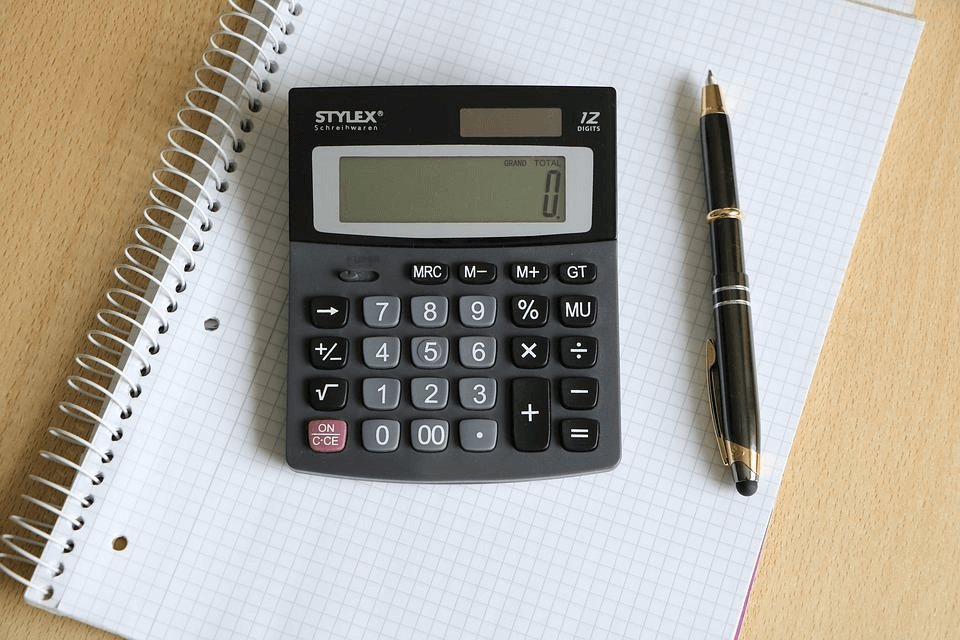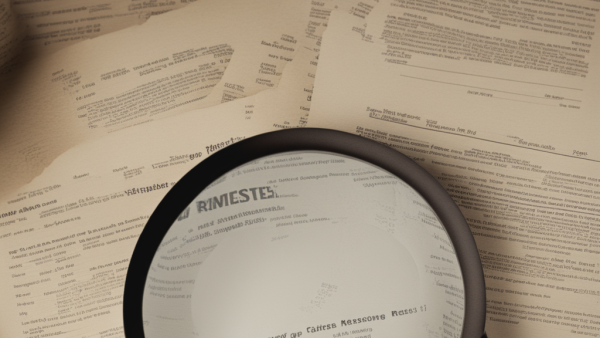
Last updated: September 03, 2022
The discount rate is a critical metric that plays a role in your SaaS business’s current reporting and future planning. If you plan to grow your business, get funding, or convince people to make an initial investment in your company, an appropriate discount rate is crucial.
Finding your company’s discount rate makes your business attractive to investors as it shows the financial viability of future investments. Investors expect to make money from viable investment opportunities, and the discount rate shows the future value of cash flows that will come from a project over time.
Getting the discount rate of your business can be complicated, making it essential to understand the discount rate formula. Read on to learn about the discount rate and how you can calculate it for your SaaS business.
Table of contents
What is the discount rate?
The discount rate can have different uses and definitions depending on the context.
In corporate finance, the discount rate refers to the minimum rate of return required to invest in an investment opportunity or project. It’s the interest rate used for discounted cash flow analysis to determine the present value of future cash flows.
In investment banking, the discount rate represents the cost of debt. It’s the interest rate charged by the Federal Reserve Bank to commercial banks and other financial institutions for short-term loans.
In this guide, the discount rate we’re interested in concerns discounted cash flow (DCF) analysis. It involves calculating your company’s future cash flows based on the net present value (NPV) and is a standard valuation method used by investors when gauging the value of an investment.
What does the discount rate indicate?

Every company or investor expects future cash flow when taking up an investment or project. However, future cash flows can’t accurately determine a project’s feasibility because the value of money decreases over time, and you have to account for uncertainties and risks related to the future.
The discount rate and NPV can help to accurately indicate whether a project or investment is worthwhile or not. The discount rate and NPV have an inverse relationship. The higher the rate, the lower the NPV and vice versa. Future cash flows decrease in value if discounted at a higher rate, so a lower rate is always desirable.
A positive NPV indicates the present value of cash flows is greater than the initial investment cost. This means the returns exceed the costs, and the project is worthwhile. If it’s negative, then it’s not wise to invest.
What is the discount rate used for?
Investors and companies use the discount rate to position themselves for success in the future. The discount rate allows investors to assess the financial viability of an investment based on the relationship between the investment’s net present value and future value.
It also helps companies understand the value of future money or a project’s future cash flows to ensure internal corporate projects are kept within budget. These goals are met by:
Accounting for the time value of money
The time value of money is an essential valuation principle. It states that money at the current date is more valuable than the same amount received in the future. Two reasons that back this theory are opportunity cost and inflation.
The opportunity cost of money involves the returns you would get by investing the capital you currently have on hand in other projects. The value of a given sum also decreases gradually over time because of general inflation. Resultantly, future money or cash flows are worth less than the present value of cash flows.
Calculating the discount rate provides a roadmap of where the value of the money invested in your business will likely go.
Calculating NPV and conducting DCF analysis

Without proper DCF analysis, you can’t gain a complete picture of the future cash flows of your company. To perform DCF analysis, you need to calculate the NPV first, and you can’t determine the DCF and NPV without the discount rate.
When you know the discount rate, you can accurately calculate the difference between the current value of the money you invest in the present and the value-return of the investment in the future. Once you calculate the net present value (NPV), you can get a sense of your DCF by pairing it with the discount rate.
DCF analysis is essential in SaaS companies because cash outflows happen before your investment makes cash inflows. DCF helps you determine the timing and size of such flows.
Determining the potential value or risk factor of future investments
The discount rate expresses the necessary investment return given the risk of future cash flows. It helps you understand the value potential of future cash flows and the risk factors of new investments or developments.
The discount rate can help indicate whether you should move forward with prospective investments by showing where your cash flow will stand in the future. It makes it easier to determine whether an investment will generate enough revenue to offset your initial expenses.
The discount rate is also crucial for capital budgeting as it can help determine how much you need to invest to guarantee profitability.
Types of discount rates

Depending on the purpose and nature of the discount rates’ use, companies can opt for different ones, including:
Weighted Average Cost of Capital (WACC)
The WACC is the opportunity cost of an investment based on other investments with similar risk profiles. It’s the return investors expect in return for capital, and it comes in handy when computing the equity value of a company.
Cost of Equity
The cost of equity is the minimum threshold for the required rate of return that a company pays to equity shareholders. It’s the compensation the investor expects for the risk undertaken in investing in a project.
Cost of Debt
The cost of debt is the rate of interest companies pay to bondholders for providing debt financing. Debt obligations like bonds or loans have interest rates you can observe in the market.
Hurdle Rate
The hurdle rate is the minimum acceptable rate of return for investing in a project. It’s a management-defined value that evaluates investments in internal corporate projects.
Risk-free Rate
The risk-free rate is the return on investments with no associated risks. It assesses the time value of money only.
NPV and DCF
The net present value (NPV) and discounted cash flow (DCF) are valuation methods that use the discounted rate as a critical element to assess the quality of an investment opportunity.
Net Present Value
NPV is the difference between the current value of cash inflows and cash outflows in your company over a given period. The calculations of your company’s NPV are affected by your discount rate and period.
The NPV measures the benefits, costs, and ultimate profitability of prospective investments over time. It accounts for returns and inflation and is featured in investment planning and capital budgeting.
You can calculate it using an excel function or use the following formula:
NPV = -C0 + C1/(1+r) + C2/ (1+r) + …..+C2/(1+r)T
Where:
-C0 = Initial investment
C = Cash flow
r = Discount rate
T = Time
In the NPV formula, the discount rate accounts for differences between the investment’s value return in the future and the money invested in the present. NPV calculations usually use the company’s WACC as the discount rate.
Investors may also want to use a specific figure as the discount rate. For example, if they’re targeting a particular rate of return, the rate of return can be used as the discount rate. Using a higher discount rate is also recommended to adjust for opportunity cost or risk.
Discounted Cash Flow
The DCF valuation method uses future investment cash flows to estimate its value. The following formula is used to calculate DCF:
DCF = CF1/(1 +dr) + CF1/(1 +dr) + ….+ CFn/(1 +dr)n
CF = Cash Flow
dr = Discount rate
You first calculate the discount rate and NPV, represented by CF above. You then perform a DCF analysis which estimates and discounts the value of future cash flows by the cost of capital to get a picture of their present values.
If the value exceeds the investment cost, then the investment is viable. With DCF, you’re answering the question: how much should be invested now at the current rate of return to gain the forecasted cash flow at a particular future date?
How to calculate discount rate

There are two formulas you can use to calculate the discount rate. The first is the weighted average cost of capital (WACC), and the second is the adjusted present value (ADV).
Weighted Average Cost of Capital
The WACC considers the cost of goods available for sale against your company’s common stock, inventory, preferred stock, bonds, and other long-term debts. It involves a combination of the after-tax cost of debt and the cost of equity.
The WACC is calculated by multiplying the cost of each capital source, like debt or equity, by the equivalent weight and adding the products together.
WACC discount rate formula
The WACC formula for the discount rate is:
WACC = E/V x Ce + D/V x Cd x (1-T)
E = Value of equity
D = Value of debt
Ce = Cost of equity
Cd = Cost of debt
V = D + E
T = Tax rate
The formula is adjustable if you wish to account for periodic inventory, which involves the cost of goods and the units available for sale at the end of the sales period. You can also adjust it for perpetual inventory.
Adjusted Present Value (APV)
In the second discount rate formula, you use the NPV. It’s different from straightforward NPV because it considers the benefits of raising debts like interest tax shields. The APV is often preferred in highly leveraged transactions.
The APV can help you discover the hidden value of investment opportunities that seem less viable. It considers a portion of debt with the financial investment, making prospects that looked unviable with NPV alone appear more attractive as investment opportunities.
APV discount rate formula
The second discount formula uses the cost of equity as the discount rate and is fairly simple:
APV = NPV + PV of the financing
NPV = Net Present Value
PV = Present Value
Discount rate calculation example
Let’s assume that your company’s shareholder equity (E) for 2027 will be £4.2 billion, and the debt value will be £1.1 billion. We can calculate the discount rate using the WACC formula.
Total capital = E + D = 4.2 + 1.1 = £5.4 billion
Equity-linked to capital cost = (E/V) X Re = (4.2/5.3) X 6.6615% = 0.0524
Debt component = (D/V) x Cd x (1-T) = (1.1/5.3) x 6.5% x (1-21) = - 0.0197
WACC = 0.0524 + -0.0197 = 3.2%
Discount rate FAQ
How vital are present and future cash flows for company health?
Very vital. Research shows that many small businesses fail because of cash flow issues, including a poor understanding of cash flow and poor cash flow management.
Investors consider a company with poor cash flow risky because they want to be sure that the value of cash flow in your company holds now and in the future. Forecasting is essential to ensure you can grow your company efficiently and sustainably.
Knowing your discount rate can help you manage cash flow health now and in the future.
Conclusion
The discount rate is critical for managing the finances of your SaaS company and attracting investors. Knowing how to find the discount rate will help investors vet your business as a potential investment while allowing you to figure out the future value of your business and projects.
Written by

Sam founded his first startup back in 2010 and has since been building startups in the Content Marketing, SEO, eCommerce and SaaS verticals. Sam is a generalist with deep knowledge of lead generation and scaling acquisition and sales.


